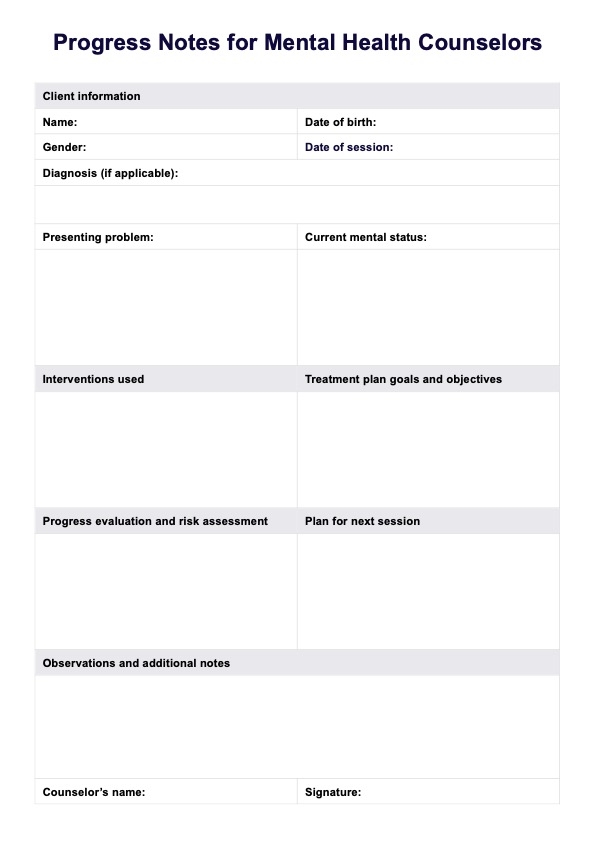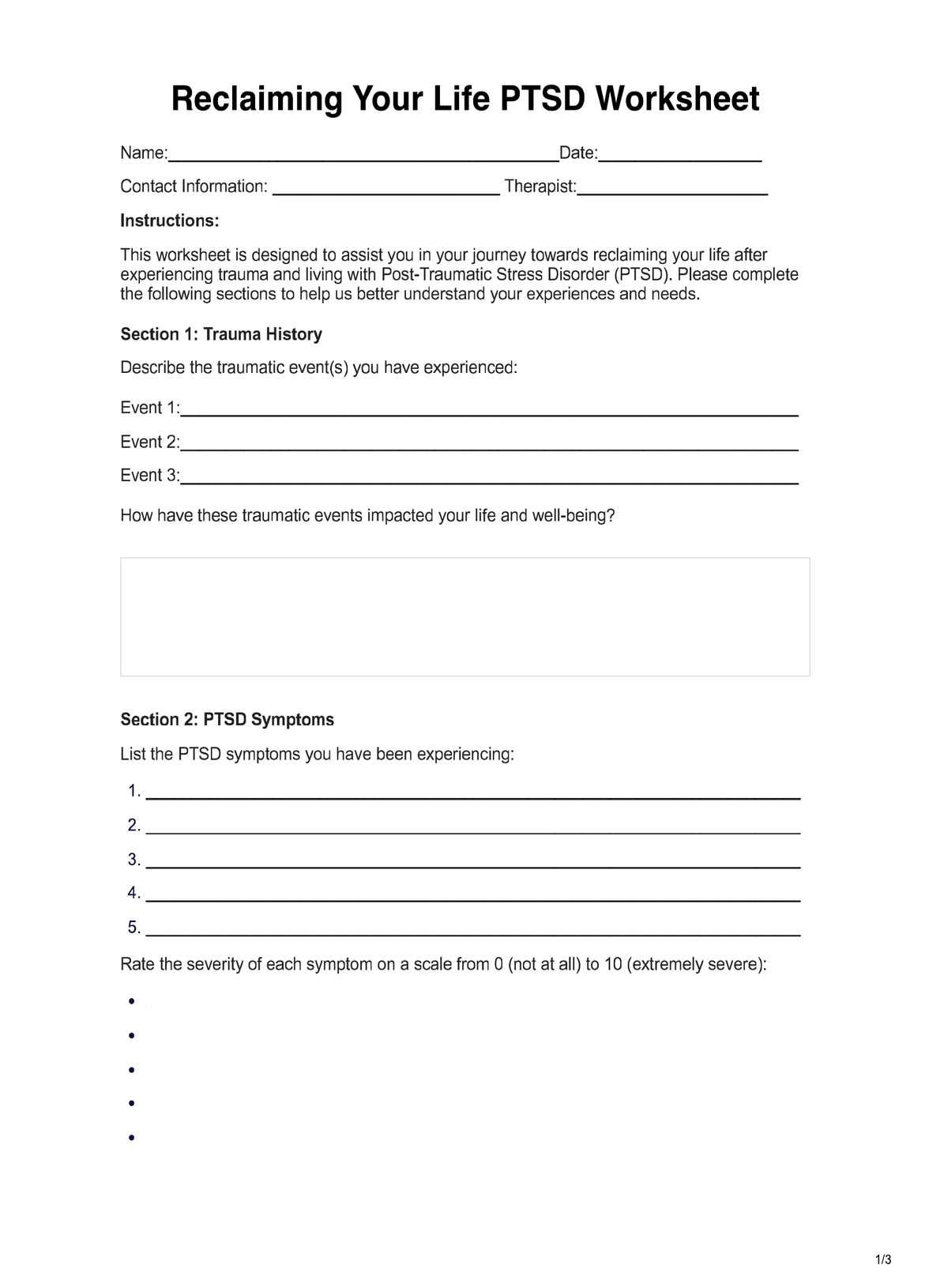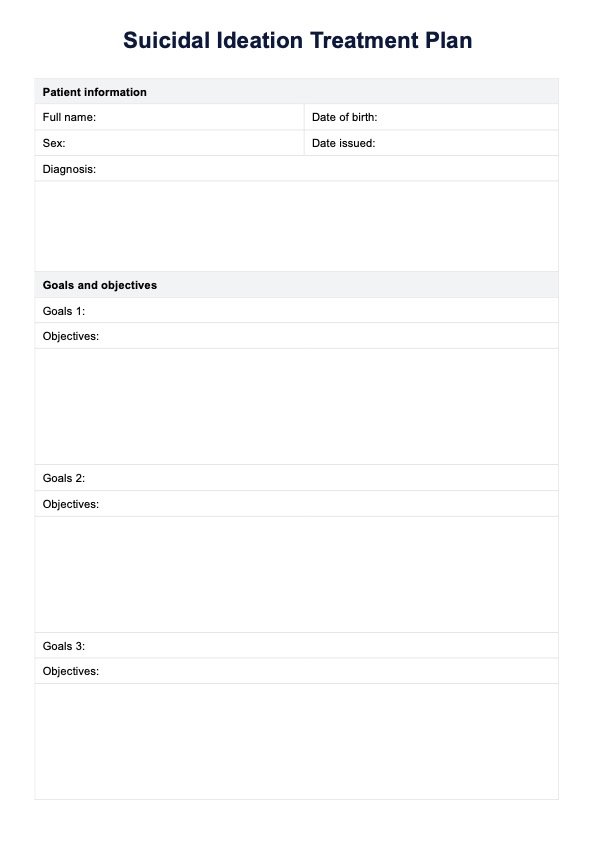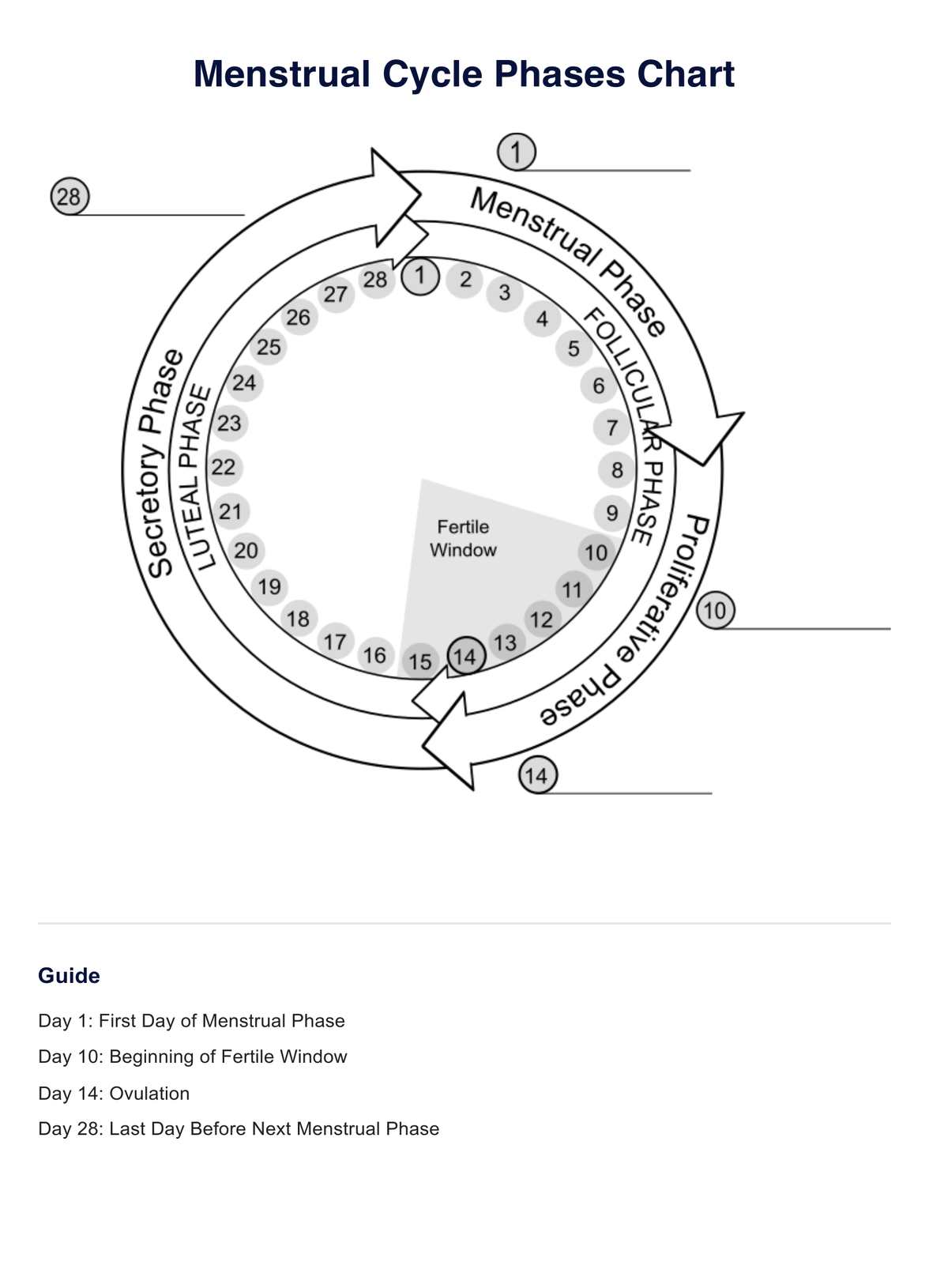Healthy Habit Checklist
Learn what a Healthy Habit Checklist is and how to implement it in your practice to help individuals succeed!


What Is a Healthy Habit Checklist?
A Healthy Habit Checklist is a versatile tool to help clients do various things. If they want to build a solid daily routine, minimize the amount of time spent doing unproductive activities, or simply be conscientious about their life—a healthy habit checklist may be an excellent task to work through. This checklist helps clients to visualize their goals.
Larger goals may require a longer duration to see results, and a healthy habit tracker can keep the individual accountable and motivated to continue their journey. A healthy habit checklist can be made on the individual’s terms or with help from their therapist or general practitioner—depending on what goals they want to achieve.
However, it is not uncommon for a healthy habit checklist to be incorporated into the counseling space to aid in treating other issues that may have arisen for that individual.
There are incredible benefits to using a healthy habits checklist, such as setting a solid routine, which can aid in decreasing symptoms of many psychological concerns and often works towards stress reduction.
Healthy Habit Checklist Template
Healthy Habit Checklist Example
How Does It Work?
The great thing about a healthy habit checklist is that it works however the individual wants it to! The first step is to identify what kinds of goals they want to set. Are these goals short-term? Are they long-term? Do they require external help? These questions will help you understand the client's needs to establish healthy habits.
The healthy habits checklist keeps the individual accountable and pushes us to be more present in the moment.
Step One: Download the Healthy Habits Checklist
The Printable Healthy Habit Checklist can be accessed on the Carepatron website.
Step Two: Collaborate With Client to Identify Healthy Habits
Collaboration with the client during this exercise is crucial. It is a good idea to talk with them about the healthy habits they want to achieve and note them down. This can be done in the first section of the healthy habits checklist.
Step Three: Organize Goals Into According Categories
During this step, the therapist and client can work together to categorize their highlighted goals into four areas. If the highlighted goal is “make bed,” this may be moved into the ‘daily’ section. Or if the goal is “reduce screen time,” this may be better suited to move into the ‘weekly’ section.
Step Four: Organize Goals Into the Checklist Section
Here, the individual will choose the goals they value the most and place them into their category in the checklist.
Step Five: Start Ticking!
Now that the Healthy Habits Checklist is completed, the client can take this home and start working on their new routine and goals!
When Would You Use This Checklist?
You can use the Healthy Habits Checklist for a variety of reasons:
Unhealthy Habit Breaking
As a general practitioner, you may meet with individuals engaging in dangerous and repetitive activities harming their health—for example, cigarette smoking. A healthy habit checklist may be an excellent way for the individual to feel motivated towards slowing their use of cigarettes and work towards a complete stop in usage.
Routine Setting
Individuals who are struggling with a solid routine may benefit significantly from a healthy habit checklist. Specifically, a daily checklist. These tasks are focused on smaller everyday tasks such as making the bed, journaling, sleeping eight hours, and drinking more water.
When paired, the healthy habit checklist can work towards setting the client up for a solid routine that can benefit them psychologically, physically, and spiritually.
Understanding Current Mindset
It’s important to understand where the client is in their journey. Are they ready to change? How big are their goals? If goals are too large and overly optimistic—they tend to be harder to achieve in a smaller time frame. You may help them see more minor changes that will eventually amount to their larger goal.
When significant goals are attempted in a small time frame and ultimately fail, it can be challenging for the individual to feel motivated to continue on their journey and can potentially undo that hard work.
What Do the Results Mean?
With our Free Healthy Habits Checklist, there are no specific results as such. This checklist is about looking at where the individual is currently in their life and finding ways to implement healthier habits to live a successful and healthy lifestyle.
The results for this checklist are simple—did they complete their goals? After creating the checklist, it is ultimately down to the individual to implement their goals into their current routine. The great thing about the healthy habit checklist is that it is designed to be adapted to the individual's situation. They may find that some of the goals they first created are no longer suited to their life—and that’s okay! They can simply remove the goal from their checklist. It is important to note that they may find they are not doing as well as they thought they might be able to in specific goals. They can look at the results they have produced (the ‘streak’ of completed tasks) and consider lowering the amount required or replacing the goal.
Research & Evidence
Extensive research is being conducted on the benefits of having a routine of healthy habits. Research mostly focuses on how when individuals commit to maintaining healthy habits in their everyday lives, they are less likely to fall into a negative cycle of unhealthy habits.
A study undertaken by Stojanovic et al. (2020) suggested that motivational blocks within the student population were less likely to be impacted by maintaining good habits. This may mean that well-practiced healthy habits are less likely to be affected if the individual is going through a difficult time. For example, it may be that the person is struggling with anxiety. If their healthy habits checklist includes the practice and implementation of ‘journaling’, they may be more inclined to stick with this habit, consequently reducing their anxiety.
Stojanovic et al. (2020) also suggest that healthy habits can help build similar habits that may help towards positive psychological functioning. It may be beneficial for the client to identify small healthy habits that are fathomable to implement into their daily routine. Once that habit has become like second nature, Stojanovic et al. (2020) would suggest that the individual may be more inclined to create similar healthy habits that would continue to contribute positively to their mental health. For example, implementing 15 minutes of movement into their daily routine might push them to consider implementing one hour of exercise per day.
References
Stojanovic, M., Grund, A., & Fries, S. (2020). App-Based Habit Building Reduces Motivational Impairments During Studying – An Event Sampling Study. Frontiers in Psychology, 11. https://doi.org/10.3389/fpsyg.2020.00167
Commonly asked questions
You can create a Healthy Habit Checklist by simply identifying goals into daily, weekly, monthly, or yearly goals and then work towards completing them.
This checklist can be used in various ways: building a healthy routine, attaining a goal, and even as a motivational push to achieve an all-around healthy lifestyle.
The Healthy Habits Checklist can be used as a ‘streak’ builder. This means that when a task is completed, the individual will tick that task and move on to the next one.
Anyone. Whether a client or a healthcare professional, you can build your Healthy Habits Checklist and start living your best life!


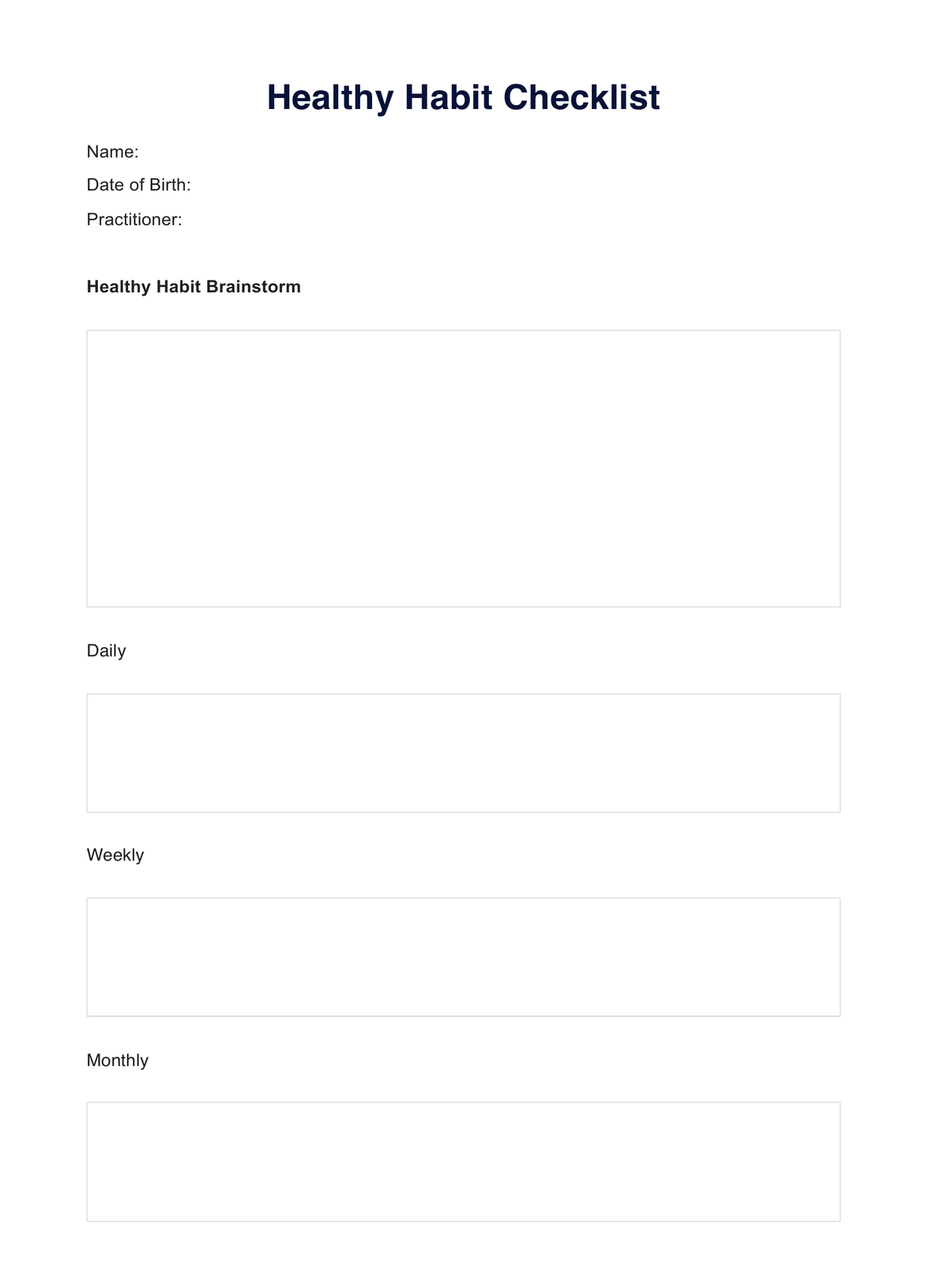
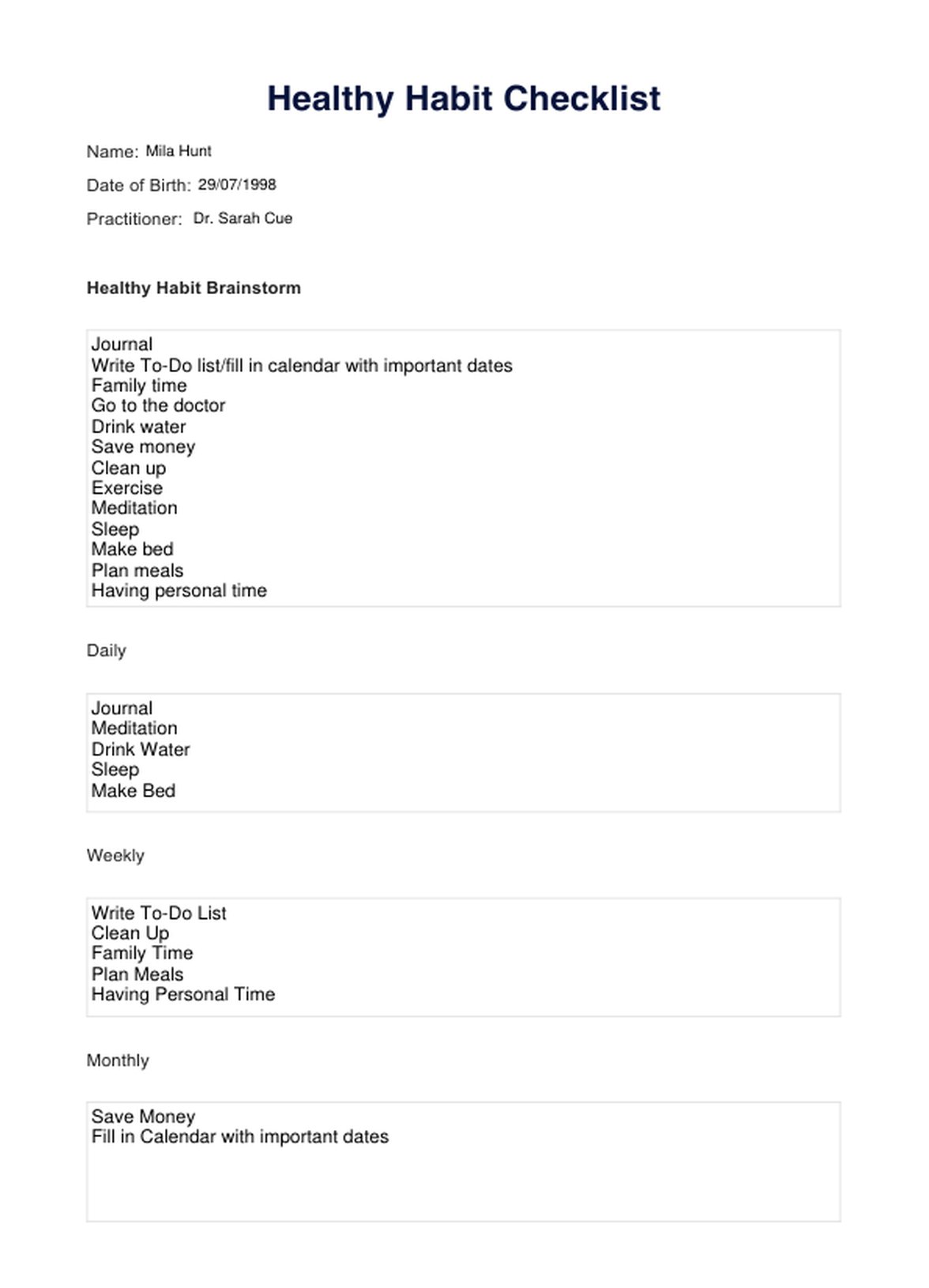



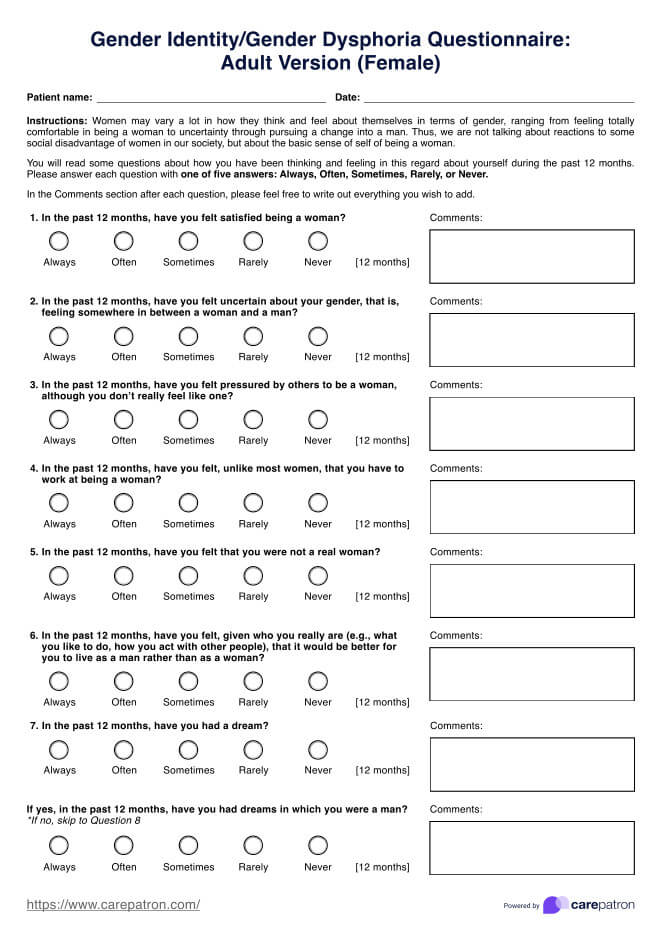










-template.jpg)






















































































